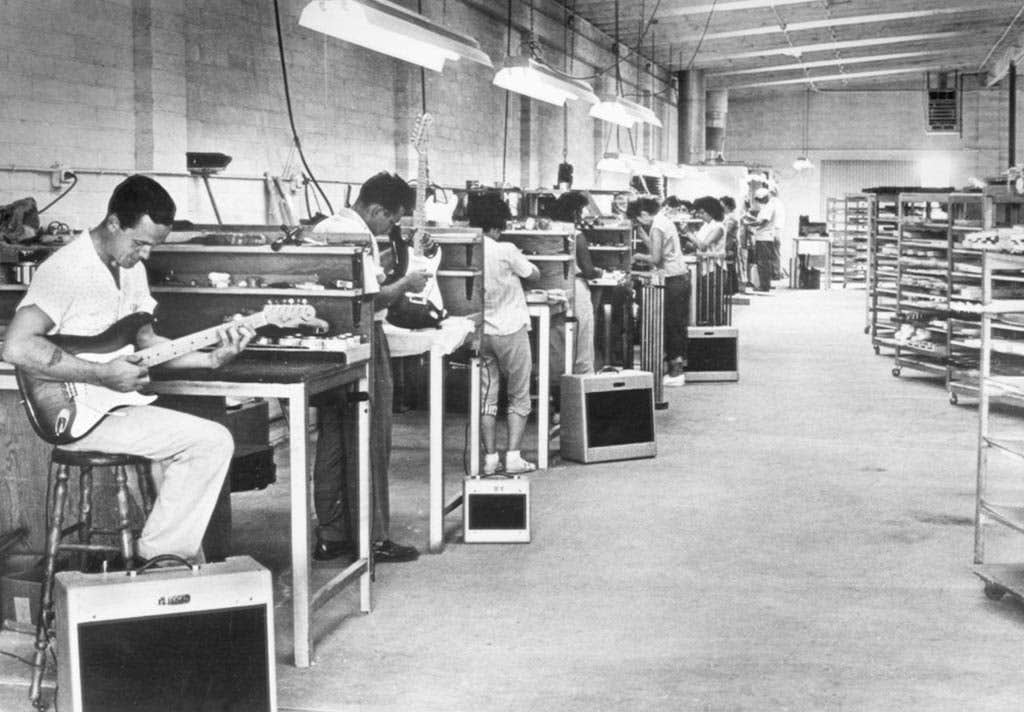Guitarists Are a Pretty Fussy Bunch.
Every player has a unique sound that starts with their fingers and ends with air exploding from a speaker cone. Whether your guitar is a Fender or Gibson, plectrum or fingers (or coins in Brian May’s case!) no singular choice is contentious as Solid State vs Tube amplifiers. This single choice can drastically change your sound so it’s a huge thing to consider when building your sound.
When amps were first hitting the market they were powered by vacuum tubes. These red-hot glowing cylinders are the heart of the amp. It’s an air-tight glass tube have a filament inside (the glowing bit) that is converting your AC current from the amps transformer into a powerful enough signal to push the speaker cone of the amp. Jargon aside, the type of tube will determine what kind of sound you get from the amp. Solid State on the other hand uses transistors in place of the vacuum tubes. These transistors are WAY smaller and lighter than any tube, making the entire construction tiny compared to a tube one.


But Why Pick One Over the Other?
When you start cranking the volume you’ll get a completely different sound come out, even if the speaker is the same. When tubes are pushed with volume they begin to break up. This is because they have a lower head-room than solid state transistors. When we say “break-up” we’re referring to distortion, so the “breaking-up” of the clean signal into a distorted one. Head-room is referring to the point at which this break-up starts occurring. Head-room will vary tube to tube, so when picking a tube amp what you’re really choosing is how the amp breaks up and at what volume it begins. Modern tube amps usually include a gain control as well as a volume, the gain controlling the breakup and the volume controlling how loud the signal is coming out of the speaker.
Solid State on the Other Hand Has Almost No Break Up at All.
Jazz players and people looking for a pedal-platform adore Solid State for the fact that no matter how loud the amp is you’ll still have a nice clean signal. They’re also much lighter than tube amps but about 60%, so carting around a Solid State amp isn’t likely to break your spine anytime soon. Because they have less parts they don’t require as much maintenance, are cheaper and are less fragile, tubes being made of glass can break easily and the elements inside will eventually burn out and become unusable.
So With All These Positives Around Solid State Amps, Why Are Tubes Still Favoured by Most Players?
The natural breakup of a tube is so smooth, controllable and baked into the history of guitar that it’s hard to turn away from it. Modern advances mean that most tube amps can do both clean and distorted sounds without much trouble, giving players options for their sound as well as emulating those of legends before them. Trying to emulate that break-up purely through pedals can often be an endless pit of money compared to simply turning a knob.










